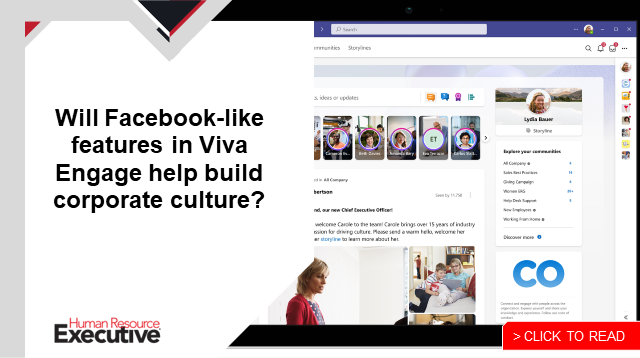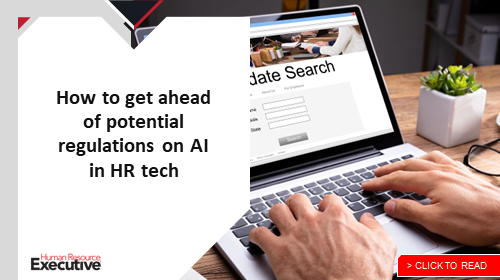As we enter the third year of remote and hybrid work models, employers are still figuring out how to navigate this new world of work, which, for some, means monitoring productivity—but it could come at a cost.
Employee monitoring tools can do everything from measure an employee’s mouse clicks on their work laptops to assess how much time it takes them to respond to messages over email, Slack or Microsoft Teams. And, in some cases, they can require employees to log back into a network if they’re idle for too long. As can be expected, all of this information can then be presented to managers and supervisors.
Monitoring tools are gaining in popularity. A recent New York Times article reported that eight of the 10 largest private U.S. employers track the productivity of workers, and research firm Gartner predicts the software will see a 70% adoption rate by employers by 2023. But what impact does real-time monitoring have on employees and corporate culture?
Not a positive one, say some industry experts.
At companies that turn to surveillance tools to keep an eye on remote workers, workplace morale could take a hit, says Robin Corralez, global senior vice president of HR at document workflow automation provider PandaDoc. She concedes that employee monitoring tools have the potential to erode trust between employees and their employers.
In fact, this could fuel the new phenomenon known as “quiet quitting,” where workers admit to performing just to the letter of their job descriptions and not much more.
“If companies are worried about productivity levels in hybrid or remote environments,” Corralez says, “the first step is setting transparent expectations that set that fine line between trust and accountability.”
Transparency about the use of monitoring tools is critical, adds Helen Poitevin, vice president and analyst in the Gartner HR practice. In April 2021, a Gartner survey revealed that 40% of workers said that their employers never informed them about what productivity data is collected and how it’s used.
She adds that employers need to be clear on exactly how employees are being monitored—and when. “Most employees believe monitoring is done during business hours,” Poitevin writes in a Gartner Q&A published on the topic. “However, some organizations collect data on employee activities outside of business hours.”
 Some employers are adamant about not using employee monitoring software. For example, Citrix, the digital workspace solution provider with 10,000 workers worldwide, does not use such software for its office or remote workers.
Some employers are adamant about not using employee monitoring software. For example, Citrix, the digital workspace solution provider with 10,000 workers worldwide, does not use such software for its office or remote workers.
Traci Palmer, vice president of people and organization capability for Citrix, agrees with the notion that productivity monitoring tools have the potential to make employees feel that they’re not trusted. “Especially if they feel like Big Brother is watching them,” she says.
So far, Citrix hasn’t seen a need to use employee surveillance tools since the start of the COVID lockdown. In surveying its workforce, Citrix found that 72% of employees say they work the same or more hours when working from home, and nearly 70% believe they are as, if not more, productive at home as when working in an office.
Trust, but verify
Much like the Russian proverb that President Ronald Reagan used when discussing nuclear disarmament with the former Soviet Union in the 1980s—trust, but verify—some say employee monitoring is necessary to give workers the flexibility many desire today.
For example, Elizabeth Harz, CEO of employee monitoring company Awareness Tech, says such tools have helped both employers and employees in the work-from-home revolution.
“Employee monitoring has enabled millions of workers to enjoy work-from-home and hybrid work while executives can ensure that people are adhering to the company’s standards,” she says.
“When surveyed, people generally say that they don’t like being monitored, but people are increasingly open to it in order to protect a work-from-anywhere option,” she says, adding that monitoring tools also ensure that workers at home are treated equally to workers in the office.
In the New York Times article, one person who installs monitoring tools in hospitals and accounting firms characterizes the arrangement as a trade-off between employers and employees who wish to work remotely. “If we’re going to give up on bringing people back to the office, we’re not going to give up on managing productivity,” Paul Wartenberg told the Times.
However, HR technology analyst Josh Bersin is skeptical about the long-term success of such products.
“Great companies set broad goals, give employees flexibility and development, and monitor just enough activity to make sure employees are productive,” says Bersin, who will deliver the keynote “The Disruption Never Stops: What’s New and What’s Ahead in the HR Tech Market” at the HR Technology Conference Sept. 13-16 in Las Vegas. (Register here.)
 “Minute-by-minute monitoring is a dysfunctional process; it destroys trust and rarely results in positive outcomes,” says Bersin.
“Minute-by-minute monitoring is a dysfunctional process; it destroys trust and rarely results in positive outcomes,” says Bersin.
Ultimately, managing remote and hybrid employees—regardless of the use of monitoring tools—may require a mindset shift on the part of managers and leaders. After all, says Citrix’s Palmer, even with the changes that have hit the workplace since the advent of COVID-19, many still view work in terms of time spent in the office and are skeptical that real work can be accomplished outside the office.
“The bottom line is that work today isn’t about the number of days and hours spent in the office and in-person visibility to others,” she says. “Employees need to be trusted to work from wherever they are most effective and evaluated on their performance outcomes and not just their output.”
The post Employee monitoring: Why it’s ‘dysfunctional’ but gaining popularity appeared first on HR Executive.